61 videos match your search.
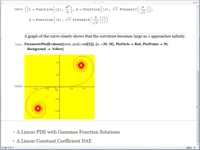 |
Devendra Kapadia This Wolfram Training on-demand course gives a broad overview of calculus functions in Mathematica. |
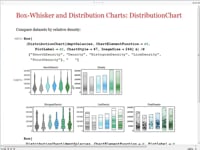 |
Brett Champion This Wolfram Training course provides an overview of some of the new statistical visualization functionality in Mathematica 8. Quantile plots, box-and-whisker plots, probability plots, and distribution charts are covered. |
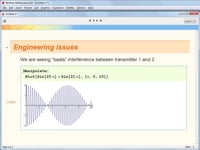 |
Jon McLoone This Wolfram Training course shows the process for creating and sharing interactive content with Computable Document Format (CDF) technology. It also shows examples ranging from textbooks to management reports. |
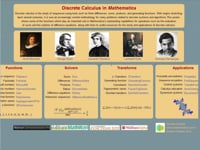 |
Devendra Kapadia This Wolfram Training on-demand course gives a broad overview of discrete calculus functions in Mathematica along with applications to fractals, sequence recognition, and the study of algorithms. |
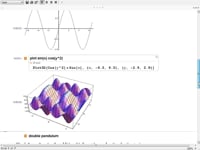 |
Kelvin Mischo This Wolfram Training course gives educators an overall picture of how Mathematica can benefit an engineering curriculum with examples of modeling, simulation, visualization, and document creation. |
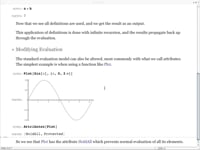 |
Adam Berry Discover functional programming with Mathematica. In this Wolfram Training on-demand course, you'll learn the core constructs, functions, and evaluation rules of a dynamic, functional language. See how to transition your ... |
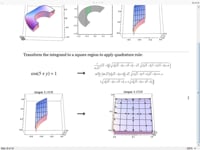 |
Andrew Moylan Mathematica takes advantage of symbolic computation and exact numbers when solving numerical problems. Get a look at Mathematica's powerful "hybrid symbolic-numeric" methods in this Wolfram Training course. |
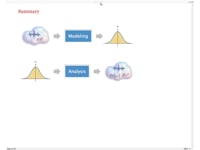 |
Roger Germundsson Get an overview of Mathematica's new high-level functions for probability and statistics and learn how to work with its large collection of built-in distributions in this Wolfram Training course. |
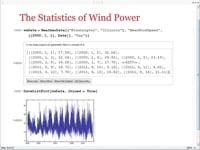 |
Jon McLoone This Wolfram Training course gives a whirlwind tour of Mathematica's key features as well as applications in image processing, control systems, GPU computation, and more. |
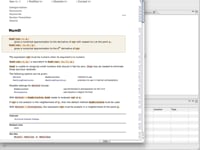 |
Adam Berry Discover different ways that you can extend Mathematica, from a simple function to a multi-component application. In this Wolfram Training on-demand course, you'll learn about the available tools to create, ... |
 |
Adam Berry Learn to develop test-first in Mathematica using the testing framework MUnit along with Wolfram Workbench. In this Wolfram Training on-demand course, the details of writing test expressions and testing strategies ... |
 |
Andy Dorsett In this Wolfram Training course, learn different ways to use Mathematica to enhance your calculus class, such as using interactive models and connecting calculus to the real world with built-in ... |
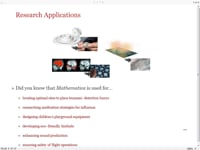 |
Michael Morrison In this Wolfram Training course, learn why Mathematica is used for academic research with a look at its programming language, support for parallel computing, and multiple publishing and deployment options. |
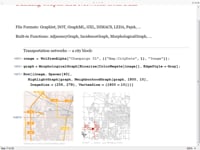 |
Charles Pooh Graphs and networks have attracted enormous interest in the last few years, helping to design communication networks, improve airline routes, model the internet, and analyze social interactions among people. This ... |
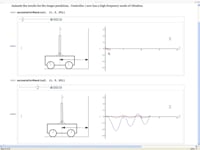 |
Bob Sandheinrich Explore the new suite of control system tools in Mathematica 8 that can be used to do analysis, design, and simulation of continuous- and discrete-time systems in this Wolfram Training course. |
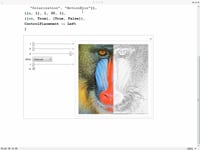 |
Chris Carlson This Wolfram Training course covers Manipulate, Mathematica's function for building interactive interfaces. Learn how to interactively explore everything from text and math to graphics and sound. |
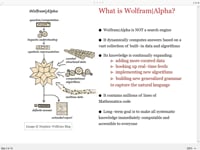 |
Vitaliy Kaurov Methods of accessing Wolfram|Alpha from Mathematica are discussed in this Wolfram Training course. Learn how to turn results from Wolfram|Alpha into formatted or raw data and computable code ... |
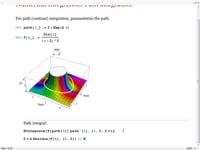 |
Andrew Moylan In this Wolfram Training on-demand course, you'll learn how to best use Mathematica's numerics functions in advanced settings. Topics include techniques and best practices for using multiple numerics functions together, ... |
 |
Paul Wellin This Wolfram Training presentation uses application-driven examples to show how straightforward it is to get data into and out of Mathematica using its Import and Export functionality. |
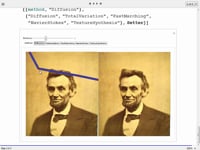 |
Timothy Kirchner This Wolfram Training course explores the depth of Mathematica's image processing capabilities, how they integrate with other features, and how they can be combined to create powerful interactive tools. |